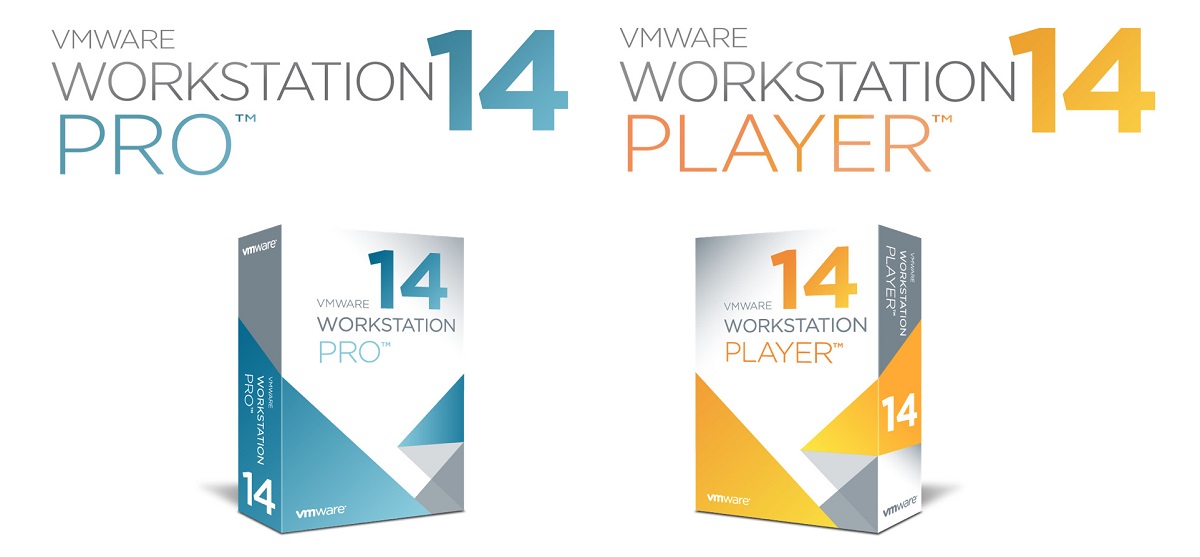Prerequisites
Before you begin deploying VCSA 6.5 on VMware Workstation, there are a few prerequisites that need to be met. Ensure that you have the following in place:
- VMware Workstation: Make sure you have VMware Workstation installed on your system. This software is essential for setting up virtual machines.
- VCSA 6.5 ISO: Download the VCSA 6.5 ISO file from the official VMware website. This will be used to install the vCenter Server Appliance.
- ESXi Host: Create a virtual ESXi host on your VMware Workstation. This will act as the host for the VCSA deployment.
- System Requirements: Check the system requirements for VCSA 6.5 to ensure that your system meets the necessary specifications.
- Network Configuration: Configure the network settings of your virtual ESXi host. Make sure it is connected to a network that allows communication with other virtual machines and the internet.
- Storage: Allocate sufficient storage resources for the VCSA deployment. Ensure that you have enough disk space for the virtual machine and any associated data.
By ensuring that you have the necessary prerequisites in place, you can proceed with the deployment of VCSA 6.5 on VMware Workstation smoothly. Having VMware Workstation installed, the VCSA 6.5 ISO downloaded, an ESXi host created, meeting the system requirements, network configuration set up, and sufficient storage allocated will set the foundation for a successful deployment.
Download the VCSA 6.5 ISO
To deploy VCSA 6.5 on VMware Workstation, you need to first download the VCSA 6.5 ISO file. Here’s how you can do it:
- Visit the official VMware website at https://www.vmware.com/.
- Navigate to the product downloads section and search for vCenter Server Appliance 6.5.
- Ensure that you have a valid VMware account, as you may be prompted to log in or create one during the download process.
- Select the appropriate version of VCSA 6.5 that matches your system requirements and click on the download button.
- The ISO file will begin downloading to your computer. Depending on your internet speed, this may take some time.
- Once the download is complete, verify the integrity of the file by comparing the checksum provided on the VMware website with the checksum of the downloaded file. This step ensures that the file has been downloaded correctly and hasn’t been tampered with.
Downloading the VCSA 6.5 ISO is an essential step before you can proceed with the deployment process. Make sure to choose the correct version and verify the integrity of the file to ensure a smooth installation. By having the VCSA 6.5 ISO ready, you’ll be one step closer to setting up your vCenter Server Appliance on VMware Workstation.
Create an ESXi Host on VMware Workstation
To deploy VCSA 6.5 on VMware Workstation, you need to have an ESXi host set up. Here’s a step-by-step guide on creating an ESXi host:
- Open VMware Workstation on your computer.
- Click on “File” and select “New Virtual Machine” to start the virtual machine creation wizard.
- Choose “Custom (advanced)” and click “Next”.
- Select “I will install the operating system later” and click “Next”.
- Choose the guest operating system as “ESXi 6.x” and click “Next”.
- Specify the name and location for the virtual machine and click “Next”.
- Allocate the desired amount of memory for the ESXi host and click “Next”. It is recommended to allocate at least 4GB of memory for optimal performance.
- Specify the network type for the virtual machine and click “Next”.
- Choose “Use a physical disk (for advanced users)” and click “Next”.
- Select the physical disk or partition where you want to install the ESXi host and click “Next”.
- Choose the desired disk controller type and click “Next”.
- Review the virtual machine settings and click “Finish” to create the ESXi host.
Once the ESXi host is created, you are ready to configure it for the VCSA deployment. Creating an ESXi host on VMware Workstation provides you with the platform to host the vCenter Server Appliance. Be sure to allocate sufficient resources and configure the necessary settings for optimal performance. With the ESXi host in place, you can proceed with the next steps to deploy VCSA 6.5.
Configure the ESXi Host for VCSA Deployment
Before deploying VCSA 6.5 on VMware Workstation, it is essential to configure the ESXi host to ensure a successful installation. Here are the steps to configure the ESXi host:
- Power on the virtual machine for the ESXi host in VMware Workstation.
- Once the ESXi host boots up, press “F2” to access the host’s BIOS setup.
- Enter the root username and password when prompted.
- In the BIOS setup, navigate to the “Configure Management Network” section.
- Configure the IP address, subnet mask, default gateway, and DNS server settings for the ESXi host.
- Ensure that the ESXi host is connected to the network and can communicate with other virtual machines and the internet.
- Save the changes and exit the BIOS setup.
By configuring the ESXi host with the appropriate network settings, you are setting the stage for a smooth VCSA deployment. The ESXi host acts as the foundation for hosting the vCenter Server Appliance and allows for smooth communication with other virtual machines and external networks. Take the time to ensure that the network configuration is properly set up to avoid any connectivity issues during the deployment process.
Deploy the VCSA on VMware Workstation
Once the ESXi host is configured, you can proceed with deploying VCSA 6.5 on VMware Workstation. Follow these steps to deploy the VCSA:
- Launch the VMware Workstation and power on the ESXi host virtual machine.
- Open the vSphere Web Client by entering the IP address or hostname of the ESXi host in your web browser. Log in with your credentials.
- In the vSphere Web Client, navigate to the “Hosts and Clusters” view and select the ESXi host where you want to deploy the VCSA.
- Click on “Actions” and choose “Deploy OVF Template”.
- In the “Deploy OVF Template” wizard, browse to the location where you have downloaded the VCSA 6.5 ISO, select it, and click “Next”.
- Review the details of the OVF template and click “Next”.
- Read and accept the end-user license agreement, then click “Next”.
- Specify a name for the vCenter Server Appliance, select the deployment size, and provide the necessary network configuration details.
- Choose the datastore where you want to store the VCSA files, and click “Next”.
- Select the configuration settings for the VCSA, such as the root password and SSO configuration details.
- Review the summary of the deployment and click “Finish” to start the deployment process.
Wait for the deployment process to complete. Once finished, you will have successfully deployed VCSA 6.5 on VMware Workstation. The vCenter Server Appliance will be ready to use, providing you with a centralized management platform for your virtual infrastructure.
Configure the VCSA Settings
After deploying VCSA 6.5 on VMware Workstation, the next step is to configure the settings of the vCenter Server Appliance. Follow these steps to configure the VCSA:
- Power on the VCSA virtual machine that you deployed.
- Open a web browser and enter the IP address or hostname of the VCSA in the address bar.
- Click on the “vSphere Client (HTML5)” link to access the vSphere Client interface.
- Log in with the username “administrator@vsphere.local” and the password you set during the deployment.
- In the vSphere Client, navigate to the “Summary” tab and click on “Configure” under the “System Configuration” section.
- Configure the network settings of the VCSA, including the IP address, subnet mask, default gateway, and DNS server.
- Set up the time synchronization settings to ensure accurate timekeeping.
- Configure the SSL certificate settings for secure communication.
- Set up the vCenter Single Sign-On (SSO) settings, including the administrator password and SSO domain.
- Review and verify the settings, then click “Finish” to apply the changes.
By configuring the VCSA settings, you are customizing the vCenter Server Appliance according to your needs. The network settings ensure proper communication, the time synchronization settings maintain accurate time, the SSL certificate settings enhance security, and the SSO settings establish the authentication for accessing vSphere services.
Once you have successfully configured the VCSA settings, you can move forward and access the VCSA web client to start managing your virtual infrastructure.
Access the VCSA Web Client
After configuring the settings of the VCSA, you can access the VCSA web client to start managing your virtual infrastructure. Follow these steps to access the VCSA web client:
- Open a web browser on your computer.
- Enter the IP address or hostname of the VCSA in the address bar.
- Press Enter to load the VCSA web client login page.
- Enter your vCenter Server username and password (the credentials you set during the VCSA configuration).
- Click on the “Login” button to access the VCSA web client interface.
Once logged in, you will have access to the vCenter Server management interface, where you can perform various tasks such as managing virtual machines, configuring network settings, creating and managing datastores, setting up virtual networks, and much more.
The VCSA web client provides an intuitive and user-friendly interface that allows you to efficiently manage and monitor your virtual infrastructure. You can navigate through different tabs and menus to access the various features and functionalities offered by vCenter Server.
By accessing the VCSA web client, you can take full advantage of the capabilities provided by VCSA 6.5 and streamline your virtual infrastructure management process.
Conclusion
Deploying VCSA 6.5 on VMware Workstation allows you to harness the power of vCenter Server Appliance for managing your virtual infrastructure. By following the necessary steps and meeting the prerequisites, you can seamlessly install and configure VCSA, giving you centralized control and enhanced management capabilities.
In this article, we discussed the prerequisites for deploying VCSA 6.5, including the need for VMware Workstation, the VCSA 6.5 ISO file, an ESXi host, and proper network configuration and storage allocation. We then walked through the process of downloading the VCSA 6.5 ISO, creating an ESXi host on VMware Workstation, configuring the ESXi host for VCSA deployment, deploying VCSA itself, and finally, configuring the VCSA settings and accessing the VCSA web client.
With VCSA 6.5 in place, you can efficiently manage your virtual infrastructure, including virtual machines, virtual networks, and datastores, among other functionalities. The VCSA web client provides a user-friendly interface for easy navigation and administration of your virtual environment.
Now that you have the knowledge and steps to deploy VCSA 6.5 on VMware Workstation, you can take advantage of its features and benefits to better manage your virtual infrastructure and streamline your operations. Empower yourself with the centralized management capabilities provided by VCSA and elevate your virtualization experience.

























